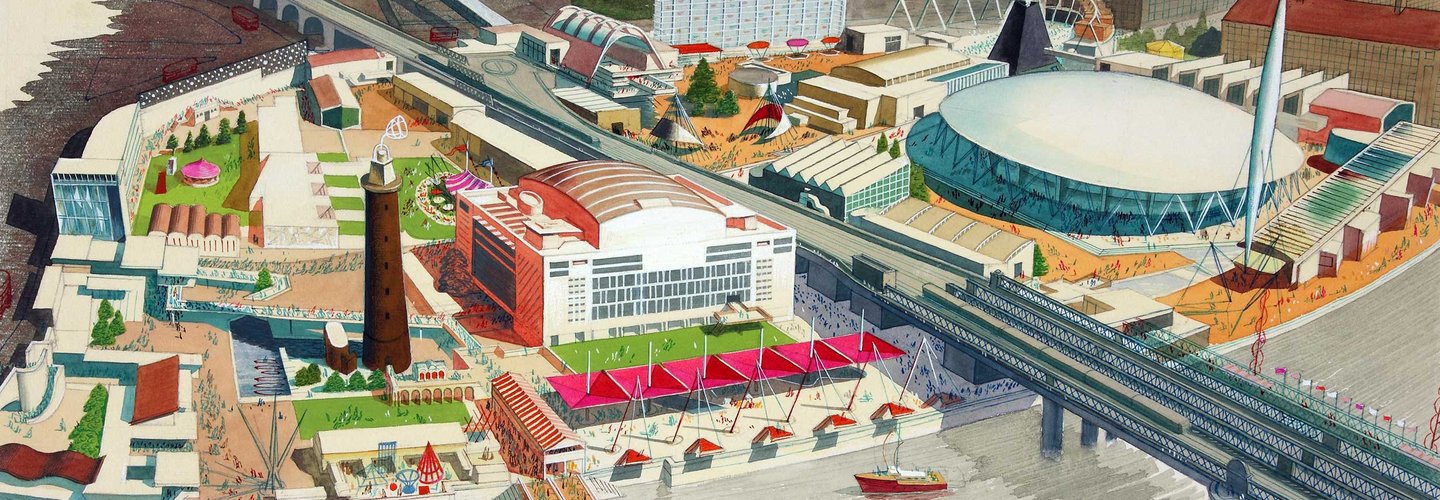Organising the Festival
The Festival of Britain was a nationwide series of events, exhibitions and festivities with a main site on the Southbank in London. It took place at a time when Britain was still feeling the effects of the Second World War, and it offered a vision of what the future could be – celebrating British industry, arts and science.
The buildings, art works, exhibitions and events for the festival were commissioned and organised by a specially created department called the Festival Office. The National Archives has the records from the Festival Office, and they include photographs of buildings under construction, posters and leaflets advertising events and exhibitions, and minutes from committee meetings. There are also some unexpected items like paint swatch cards and textile samples for uniforms.
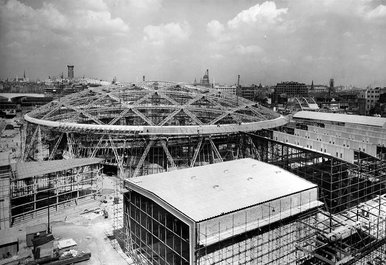
The Dome of Discovery under construction. Catalogue reference: WORK 25/201.

A page from the guide to the Festival of Britain. Catalogue reference: ZLIB 17/129A.
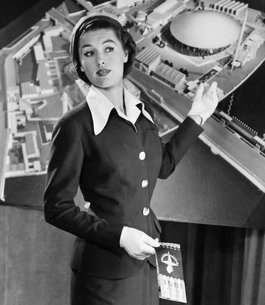
An example of the uniform for female guides. Catalogue reference: WORK 25/201 (2266).
Opposition
Not everyone was in favour of the festival. Some people complained that Britain couldn’t afford it and that it wasn’t a good use of labour and materials, which were in short supply.

This cartoon by German-British political cartoonist, Victor Weisz (Vicky), depicts opposition to the festival. Catalogue reference: WORK 25/208.
But others believed that the austerity and political uncertainty of the times made it even more important to show how Britain was recovering from the war and moving forward.
Architects, artists and designers were given an opportunity to use new materials and to create a vision of post-war living for a nationwide audience.
Buildings
A number of new structures were designed for the Southbank site, including the Royal Festival Hall which still stands today, and the Dome of Discovery which later influenced the design of the Millennium Dome (now The O2 Arena).
The Skylon was designed following a competition for a ‘vertical structure’. The design was futuristic and left people wondering how it stayed upright. It became the source of a popular joke that, like the British economy, it had no visible means of support
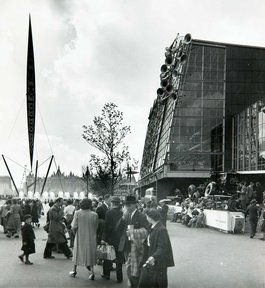
The Skylon on the South Bank. Catalogue reference: WORK 25/208.
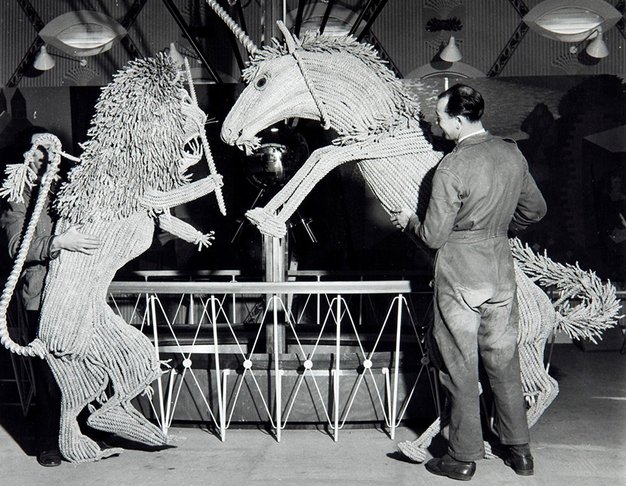
Blog: The Lion and Unicorn Pavilion
This blog explores the design of the Lion and Unicorn Pavilion and the displays inside it. It includes insiders’ views from Henrietta Goodden, daughter of architect Robert Goodden, and Ray Leigh who worked with him as a young student in 1951.
Across the UK
The festival opened officially on 3 May 1951 and was a great success. As well as the main site on the Southbank, people could visit the pleasure gardens in Battersea, and the exhibition of Architecture in Poplar.
Outside London there were exhibitions in Glasgow and Belfast, various travelling exhibitions and many locally organised events.
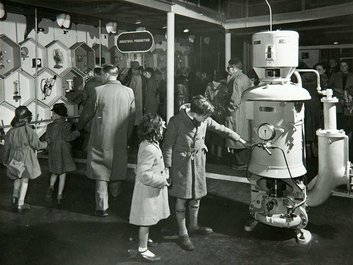
Part of the exhibition inside the festival ship, Campania, which toured Britain’s coast. Catalogue reference: WORK 25/209.
Legacy
The festival had a lasting impact on design and architecture, with many young professionals establishing their names through their contributions.
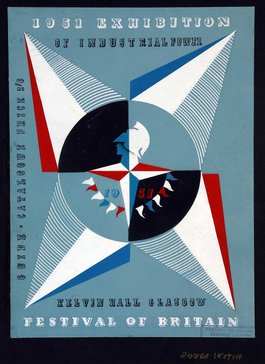
Original artwork for a leaflet featuring the festival emblem designed by Abram Games. Catalogue reference: WORK 25/74-B3-C16.

Video Series: The Festival of Britain 70 Years on (Opens in a new tab)
In 2021, to mark the 70th anniversary of the festival, The National Archives created a series of four videos exploring its legacy with descendants of festival designers Robin and Lucienne Day, and Abram Games. The videos also feature Mini Moderns, a contemporary design company strongly influenced by the festival, and a Visual Collections curator from The National Archives.
Records featured in this article
-

- From our collection
- WORK 25/201
- Title
- Photographic records from the Festival of Britain
- Date
- 1950
-
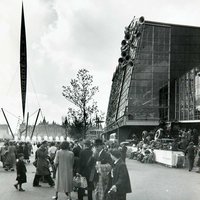
- From our collection
- WORK 25/208
- Title
- Photographic records from the Festival of Britain
- Date
- 1951
-

- From our collection
- WORK 25/209
- Title
- Photographic records from the Festival of Britain
- Date
- 1951
-

- From our collection
- ZLIB 17/129A
- Title
- Guide to the South Bank Exhibition by Ian Cox
- Date
- 1951
-

- From our collection
- WORK 25/74/B3/C16
- Title
- Publicity literature by Abram Games
- Date
- 1948–1952
